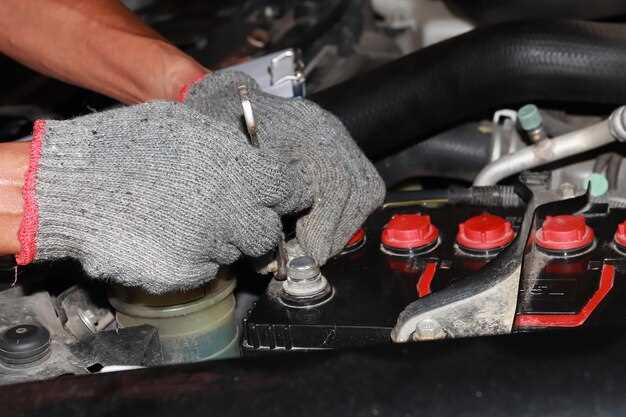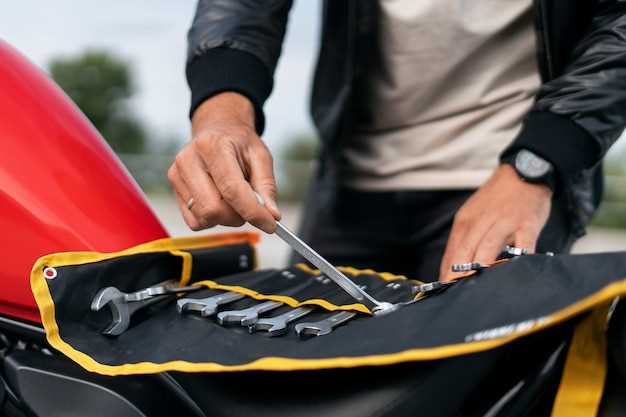

Maintaining the integrity and performance of your Mustang battery is crucial for ensuring a smooth driving experience. Regularly checking your battery for any signs of wear and tear can save you from unexpected breakdowns and costly repairs. In this guide, we will explore essential tips for battery maintenance, ensuring your vehicle remains reliable and efficient.
It is important to check your battery’s health periodically, as various factors can impact its lifespan, including temperature extremes and driving habits. Familiarizing yourself with your battery’s specifications and understanding its signs of deterioration will empower you to take proactive measures. This guide will provide insights into the optimal maintenance practices and when it might be time for a battery replacement.
By following these maintenance tips and staying attuned to your battery’s condition, you can enhance the longevity of your Mustang’s battery. Whether you are looking to prolong the life of your current battery or prepare for future replacements, understanding the key elements of battery care is essential for any Mustang owner.
Mustang Battery Care Guide: Maintenance and Replacement Tips

Taking care of your Mustang’s battery is crucial for optimal performance and longevity. Here are some essential maintenance and replacement tips to ensure your battery functions efficiently.
Regular Checks: Regularly check your battery connections for any signs of corrosion. Clean terminal posts with a wire brush and a mix of baking soda and water if necessary. Ensure that the connections are tight to prevent any power loss.
Battery Fluid Levels: If your Mustang has a traditional lead-acid battery, check the fluid levels periodically. Top them up with distilled water to maintain the proper functioning of the battery plates.
Temperature Effects: Extreme temperatures can affect battery performance. In hot weather, ensure that the battery is securely installed and free from any obstructions that can lead to overheating. During cold weather, a battery blanket can help maintain temperature, ensuring reliable starts.
Installation Tips: When installing a new battery, make sure to follow the manufacturer’s guidelines. Connect the positive terminal first followed by the negative terminal. This precaution helps avoid potential short circuits during the installation process.
Replacement Signs: Be aware of signs that indicate a battery replacement is needed. If your Mustang experiences slow starts, dim lights, or electronic issues, it might be time to check the battery health and consider replacement.
Following these maintenance and replacement tips will help prolong the life of your Mustang’s battery and keep your vehicle running smoothly on the road.
Routine Checks: How to Assess Your Mustang’s Battery Health
Regular maintenance of your Mustang’s battery is crucial to ensure optimal performance and longevity. Here are essential steps to assess the health of your battery:
- Visual Inspection
- Check for corrosion around the battery terminals. This can appear as a white or greenish residue.
- Inspect the battery casing for cracks or bulges, which may indicate internal damage.
- Ensure that battery connections are tight and secure to prevent power loss.
- Check Battery Voltage
- Use a multimeter to measure the battery voltage. A healthy battery should read between 12.4 and 12.7 volts when the engine is off.
- If the reading is below 12.4 volts, the battery may need charging or replacement.
- Load Testing
- Consider performing a load test, which simulates the battery’s performance under strain.
- A load tester can provide insights into the battery’s ability to hold a charge; it should maintain at least 9.6 volts under load.
- Check Electrolyte Levels
- If your Mustang has a traditional lead-acid battery, verify that the electrolyte levels are adequate.
- Top off with distilled water if levels are low, but avoid overfilling.
- Battery Age Assessment
- Check the date stamp on the battery. Most batteries have a lifespan of 3 to 5 years.
- If your battery is nearing or exceeding this age, consider planning for its replacement.
Performing these routine checks can help you identify potential battery issues early, ensuring reliable starting and performance for your Mustang.
Step-by-Step Installation Guide for Replacing Your Mustang’s Battery
Replacing your Mustang’s battery can be a straightforward task if you follow these detailed steps. Ensure you have the right tools and a new battery compatible with your vehicle model.
Step 1: Safety Precautions
Before you start, ensure the vehicle is turned off, and the keys are removed from the ignition. Wear safety goggles and gloves to protect yourself from battery acid and other potential hazards.
Step 2: Locate the Battery
Open the hood of your Mustang and locate the battery. It is typically positioned on the driver’s side. Check the battery terminals for any visible wear or corrosion which could indicate the need for replacement.
Step 3: Disconnect the Battery
Using a wrench, loosen the bolt on the negative terminal (usually marked with a “–” sign) and remove the cable. Repeat this process for the positive terminal (marked with a “+” sign). Always disconnect the negative terminal first to prevent any short-circuiting.
Step 4: Remove the Old Battery
Depending on your Mustang model, the battery may be secured with a hold-down bracket. Remove any brackets or clamps before lifting the battery out carefully. Batteries can be heavy, so ensure you have a firm grip.
Step 5: Clean the Battery Tray
Before placing the new battery, check the battery tray for any corrosion or debris. Clean the area thoroughly with a baking soda solution to neutralize any acid residue. Rinse and dry before proceeding.
Step 6: Install the New Battery
Position the new battery into the tray, ensuring the positive and negative terminals are on the correct sides. Reattach any hold-down brackets to secure the battery in place.
Step 7: Reconnect the Battery
Start by connecting the positive terminal first, then the negative terminal. Ensure both connections are tight and secure to prevent any issues while driving.
Step 8: Check Battery Functionality
Before closing the hood, start your Mustang to check if the battery is functioning properly. Ensure all electrical components are operational. If everything is working, you can proceed to close the hood.
Step 9: Dispose of the Old Battery Responsibly
Do not throw the old battery in the trash. Take it to a recycling center or an automotive store that accepts used batteries. Proper disposal helps protect the environment.
Common Battery Issues: Troubleshooting Tips for Mustang Owners

Mustang owners may encounter various battery-related issues over time. Understanding these challenges and knowing how to troubleshoot them can extend the life of your battery and ensure your vehicle operates smoothly.
1. Battery Not Holding Charge
If your Mustang’s battery frequently discharges, the first step is to check the age of the battery. Most batteries last between 3-5 years. If yours is older, it might need replacement. However, if it’s relatively new, inspect the terminals for corrosion or loose connections, which can impede proper installation and function.
2. Difficulty Starting the Engine
Hard starting can indicate a weak battery or a failing starter. Ensure the battery is fully charged and connections are secure. If the battery is charged and the engine still struggles to turn over, the starter might need evaluation or replacement.
3. Dim Lights and Electrical Issues
Dim headlights or inconsistent electrical components often signal a battery problem. This may be caused by a failing battery or a poor connection. Check for corrosion at the terminals and clean them if necessary. Ensure all cable connections are tight.
4. Swelling or Leakage
Physical changes to the battery, such as swelling or leaking, are serious concerns. These symptoms may indicate overcharging or internal damage. In such cases, discontinue use immediately and consult a professional for proper disposal and replacement.
5. Warning Lights on Dashboard
Dashboard warning lights related to battery efficiency can indicate issues with the charging system. Use a multimeter to check the battery voltage; it should read between 12.4 to 12.7 volts when fully charged. If the voltage is low, consider a battery test or replacement.
Routine maintenance and proper installation are crucial for preventing battery-related issues. Regularly inspect your battery and its connections to maintain optimal performance and longevity.






